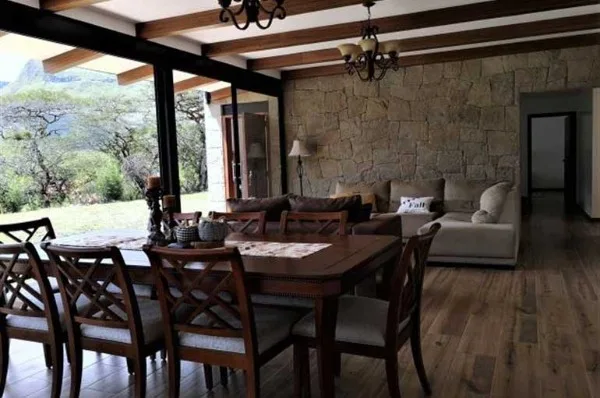Measles in Cuenca: Facts and fiction
By Susan Burke March
Measles (in español, el sarampión) is a potentially deadly and highly contagious viral disease. According to the World Health Administration (WHO), measles remains an important cause of death among young children globally, despite the availability of a safe and effective vaccine.

Measles is transmitted via droplets from the nose, mouth or throat of infected persons. According to the National Foundation for Infectious Diseases, you can get the measles just by being in the same room with an infected person — it’s that contagious — unless you’ve been vaccinated or you’ve acquired immunity by having had the measles.
Symptoms of measles include high fever, generalized rash, runny nose, pink, watery eyes, coughing, diarrhea, and earache. The average time between exposure to the measles virus and development of symptoms is usually 10 to 12 days but can range from as few as seven days to as many as 21. A rash develops, starting on the face and upper neck and gradually spreading downwards.

El Mercurio reported Wednesday that there is a confirmed case of the measles in Cuenca. An 18-month-old child (not from Ecuador) currently living in the Maria Auxiliadora neighborhood (the neighborhood near the Iglesia Maria Auxiliadora, located in El Centro on Antonia Vega Muñoz between General Torres y Padre Aguirre) has contracted measles, and the area is of concern to the Ministry of Health.
Are ministry representatives knocking on doors and forcing everyone to get a vaccine? No. Their director of prevention is recommending that all children under age seven and in addition all children from Venezuela and from Columbia under age 15 be vaccinated for measles.
This past Sunday, my landlord here at the hotel near the New Cathedral where we reside in El Centro called me. “Are you upstairs in your apartment? The Ministry of Health is here offering immunization against the measles.” Having just returned to Cuenca, we were not at home, but our home exchangers from New Zealand were still here in the apartment. They told the hotel receptionist that they had been vaccinated in New Zealand. No problem, no vaccination necessary. My landlord said that the health representatives were making vaccines available to tourists and expats because they “travel so much” and it was for “prevention.”
I spoke with the administrator of our former condominium residence on Calle Larga in El Centro (where there are 23 apartments). She said that on Saturday she received a call on her cell phone from a ministry health representative saying that they wanted to offer vaccinations to expats and tourists. The administrator said to please contact her on Monday. Today is Wednesday, and no further contact yet.
Garry Vatcher of Hogar de Esperanza, a foundation in El Centro that helps those in need of medical assistance, related that he also had a visit from the health ministry representatives. He related that the representatives said that they want to be sure that expats are vaccinated because they tend to travel a lot, and the health ministry is trying to prevent the spread of the disease. He also said the representatives wanted everyone to know that the vaccine is available at any Ministerio de Salud Health Center, and that it is free. Just say “Yo quiero la vacuna contra el sarampión, por favor.”
According to the U.S. National Foundation for Infectious Diseases in 2013, there were 145,700 deaths due to the measles. Before the measles vaccine became widely available, there were 2.6 million measles deaths per year — and this is where there were far fewer humans on the planet Earth. The risk of death from measles is higher for adults and infants than for children. In the U.S. the outbreaks of measles in 2008 and 2011 primarily affected those who were not vaccinated with the MMR (measles-mumps-rubella) vaccine
My friend Bob overheard my phone conversation with my landlord on Sunday and decided if free vaccination were available, he would take advantage of it. I asked him to detail his experience on this past Monday.
I went on Monday to the Ministry of Health: Centro de Salud on 12 de Abril, but there was a line of people with their babies and the facility ran out of vaccines for that day.
I went from there to the Centro de Salud on Heroes de Verdeloma and they gave me the shot with no waiting. All they asked for was my name, age and country of birth. I showed a copy of my cedula and the nurse took the information from that. (She didn’t ask for my phone number, address, or anything else.)
She saw on my WHO yellow card that I had a MMR vaccination in 2004 and decided the measles booster would be good. She made entries on my WHO card and the white card I got with the influenza vaccine in December.
She only said that this was for babies and people who are likely to travel, to prevent the disease from spreading. She didn’t say anything about tourists leaving Ecuador and I assumed it was just as important for people traveling inside Ecuador. It makes no sense to only vaccinate people leaving the country.
There was nothing nosy, personal or threatening about it. She was entirely professional.

Today I visited my physician Dr. Jaime Moreno, at Consultorios Santa Ines. Dr. Moreno has not heard of a case of measles in Cuenca in more than 30 years but that when he was a medical student in the late 1970s he saw many cases of measles, with dire consequences. Measles can have permanent disabling ramifications including pneumonia, brain inflammation, and middle-ear infection. Pregnant women who contract the measles incur a significant risk for miscarriage and low birth weight infants. As Dr. Moreno says, the success of the vaccination campaigns in Ecuador is obvious. In Cuenca, measles is an extremely rare disease. Currently, the cases seen in Ecuador are all in children who are here from other countries where vaccination is less available.
The overwhelming majority (more than 95%) of measles deaths occur in countries with low per capita incomes and weak health infrastructures. Reaching all children with two doses of measles vaccine, either alone, or in a measles-rubella (MR), measles-mumps-rubella (MMR), or measles-mumps-rubella-varicella (MMRV) combination, should be the standard for all national immunization programs.
Just by chance, there was a health fair in the courtyard next to the New Cathedral this afternoon. I went over and spoke with a health worker from a local ambulance company. Between his good English and my poor Spanish I learned that yes, Cuenca is offering free vaccination to all, and officially, they recommend it.
The measles vaccine has been in use since the 1960s. It is safe, effective and inexpensive. WHO recommends immunization for all susceptible children and adults for whom measles vaccination is not contraindicated. In my regular Friday column, I will detail these contraindications.
Sources
National Foundation for Infectious Diseases. Facts about Measles for Adults.
World Health Organization. Measles.





















